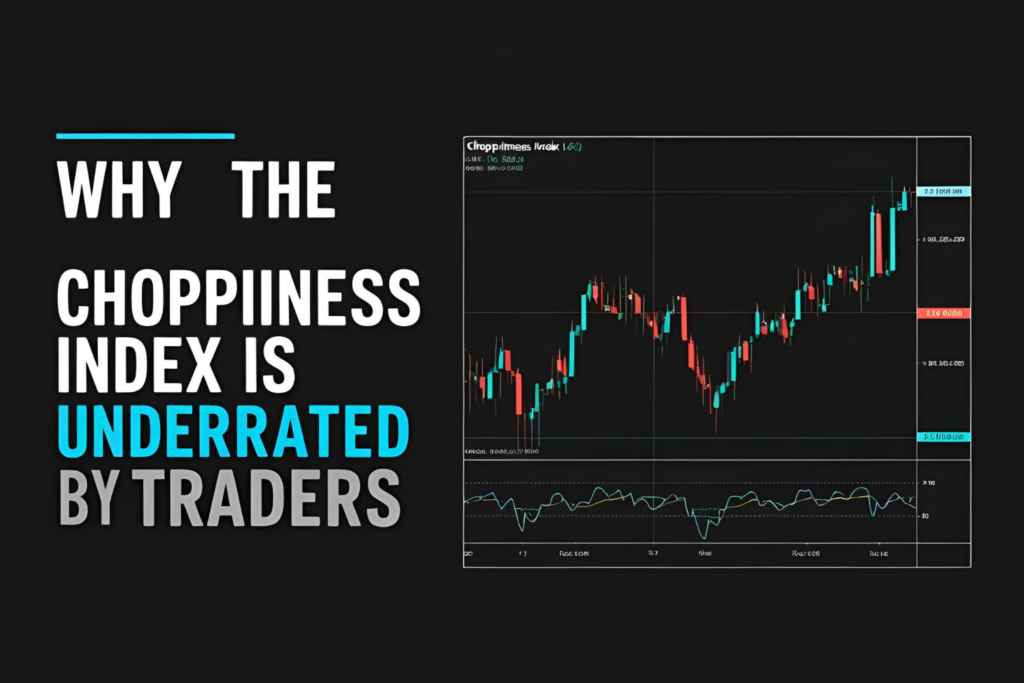Introduction
While tools like RSI, MACD, and Bollinger Bands dominate most traders’ charts, the Choppiness Index often gets overlooked. But this simple yet powerful indicator provides critical insight into market structure that most others don’t. In this article, we explore why the Choppiness Index is underrated—and how using it can improve your trading edge.
What Makes the Choppiness Index Unique?
Unlike trend-following or momentum indicators, the Choppiness Index is neutral:
- It doesn’t assume direction
- It focuses purely on market condition: trending vs ranging
This makes it extremely valuable for choosing the right trading strategy based on context.
Top Reasons Traders Underrate the Choppiness Index
1. They Expect Buy/Sell Signals
Traders are often looking for clear entry signals. But the Choppiness Index is not a signal generator—it’s a strategy filter.
2. It’s Not as Visual
Unlike RSI or MACD, which often include crossovers or histograms, the Choppiness Index has a simple line format. This can lead some to overlook its value.
3. They Don’t Understand Its Purpose
Many mistake it for a volatility or momentum indicator. It’s not. It shows how directional (or non-directional) the market currently is.
Why It Deserves More Attention
- Reduces bad trades during sideways markets
- Helps determine when to use trend vs range strategies
- Works on all timeframes and asset classes
- Can be automated or combined with other indicators for advanced strategies
What Smart Traders Do Differently
- Use the Choppiness Index to filter false breakouts
- Combine it with trend indicators (like EMAs or MACD)
- Create alerts for when the market is entering or exiting trend phases
- Rely on it to choose the right tool for the right condition
Simple Use Case
| Situation | Action |
|---|---|
| CI > 61.8 (Choppy) | Avoid trend setups / Use range strategy |
| CI < 38.2 (Trending) | Consider breakout or trend-following strategy |
| CI Rising from Low Zone | Watch for trend exhaustion or possible reversal |
FAQs
1. Why don’t most traders use the Choppiness Index?
Because it’s less talked about and doesn’t provide direct trade signals. But those who do use it gain valuable insight.
2. Is it useful for beginners?
Yes, especially when learning the difference between trend and range markets.
3. Can it be part of a larger system?
Absolutely. It’s best used as a foundation filter in trading systems.
4. Does it repaint?
No. The Choppiness Index is based on historical data and remains stable.
5. Should I build a strategy around it?
Yes, especially if your strategy depends on knowing when to trade vs when to wait.
